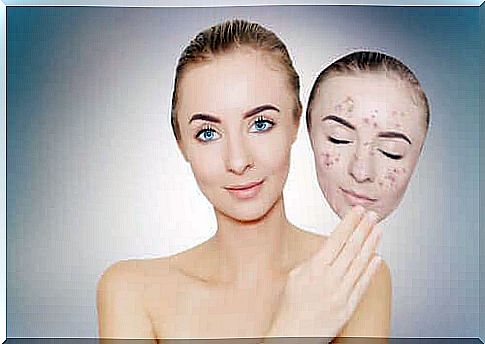Depigmenting Creams: What Are They Made Of And How To Use Them?
The appearance of spots on the skin is a cosmetic problem that is annoying for the majority of people. Luckily, the application of depigmenting creams helps to reduce them significantly. Want to know more about it?

One of the most feared cosmetic problems is the appearance of spots on the skin. Unfortunately, sun exposure, age, hormonal imbalances and many other factors increase the risk of suffering from it. Thus, more and more people are opting for the use of depigmenting creams.
This type of product contains components that help reduce skin hyperpigmentation, which makes the skin appear more even and younger. However, for there to be good results, it is important to know how to apply them properly. This is why in this article, we want to explain how to make good use of it.
Depigmenting creams: what are they?

Depigmenting creams are cosmetic products that help reduce or remove spots that appear on the skin. Its active components have the ability to clog melanin in affected areas and stimulate hydration as well as cell regeneration.
According to a publication by the NHS Foundation Trust, they can therefore contain a combination of various drugs, including hydroquinone, retinoids and corticosteroids. Each of these substances has different actions on the skin. Let’s see them in detail:
- Hydroquinone or hydroquinone mono benzyl ether : it is a substance that helps inhibit the overproduction of melanocytes-pigment cells
- Retinoids : such as tretinoin and acid retinoic, they help stimulate the regeneration of skin cells. In addition, they facilitate the penetration of hydroquinone from the skin
- Corticosteroids : they have the ability to decrease and prevent inflammation of the skin. The most common example is hydrocortisone
In addition to the substances already mentioned, depigmenting creams may contain vitamin C, kojic acid, adapalene – which is also a retinoid – or azelaic acid. Likewise , some creams contain plant extracts such as bearberry, arbutin, licorice, chamomile or blackberry.
How to use depigmenting creams?
First of all, it is important to take into account that depigmenting creams do not have instant effects. In fact, in general, treating skin spots is a challenge that takes time. It is best to consult your dermatologist to find out all the options available for treatment.
One thing that is crucial for obtaining good results with this type of product is to be consistent in their application. On the other hand, it is essential to know that the effects start to be noticeable between 6 and 12 months after the first use. In addition, the ideal is to apply them once or twice a day.
Manual
- To begin with, it is necessary apply a thin layer of the depigmenting cream to the stain. As we have said, this application should be repeated up to twice a day, according to the indications of the dermatologist
- Before and after using the product, it is important to wash your hands well and avoid skin-to-skin contact with other people for at least an hour after application
- Its use should be avoided in areas close to the eyes or around the eyelid area. For this type of areas, there are specific products available
- We also do not recommend their application if the skin shows scratches, burns or rashes.
Sunscreen: the ideal supplement

If it is a question of preventing and treating skin spots, there is one product that cannot be missed: sunscreen. According to information from the American Academy of Dermatology, applying sunscreen is essential, even when it rains or snows.
So, the ideal is to choose a formula that offers an SPF 30 or higher. In addition, it is preferable that it contains zinc oxide or titanium dioxide. In case you have oily skin, “non-comedogenic” alternatives can help prevent blockages or rashes.
Do we take risks by using depigmenting creams?
Depending on the formula, depigmenting creams can cause photosensitivity. It is therefore important to apply them only in the evening. Known side effects from their use include mild skin irritation and allergic reactions like burning, itching and dermatitis.
If these symptoms are present, the use of the cream should be stopped immediately and a dermatologist should be consulted. Some entities such as the American Academy of Dermatology report that, in addition, there are creams that contain mercury and other ingredients that are harmful to the skin. So, when choosing them, it is better to go for the ones that are approved by the dermatologist.









